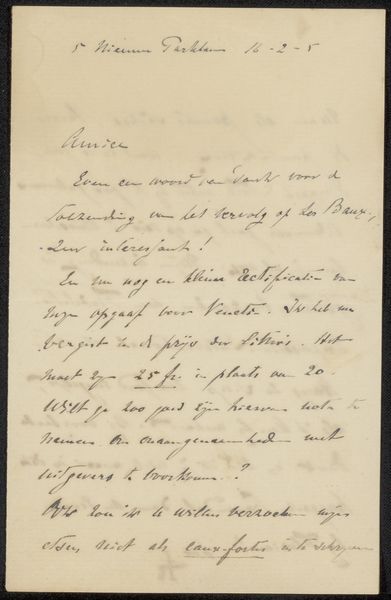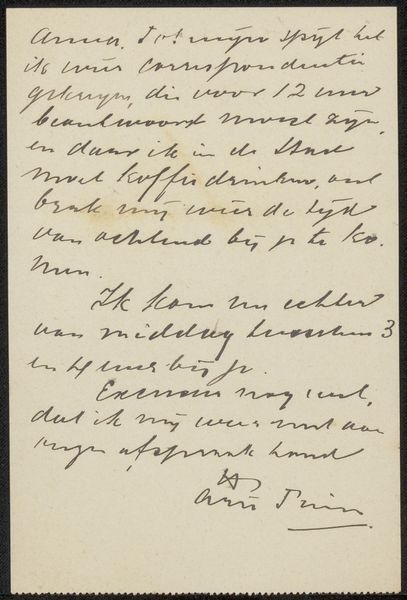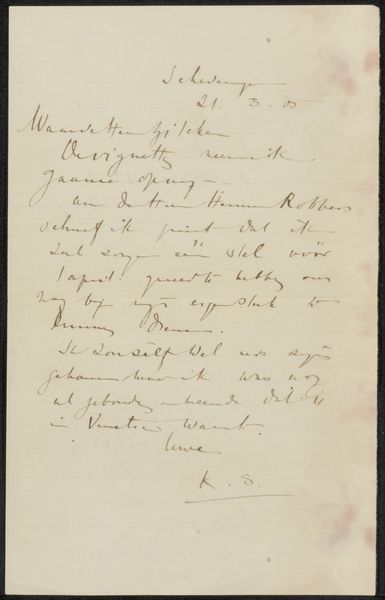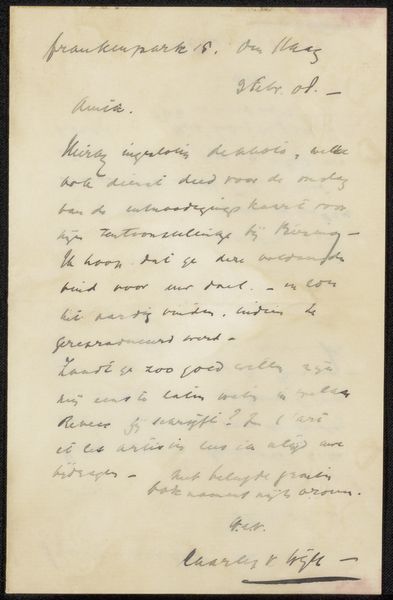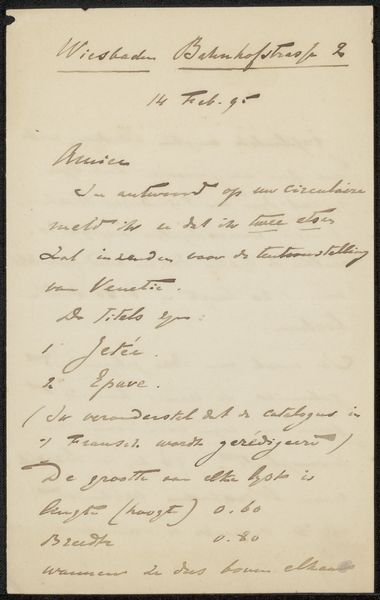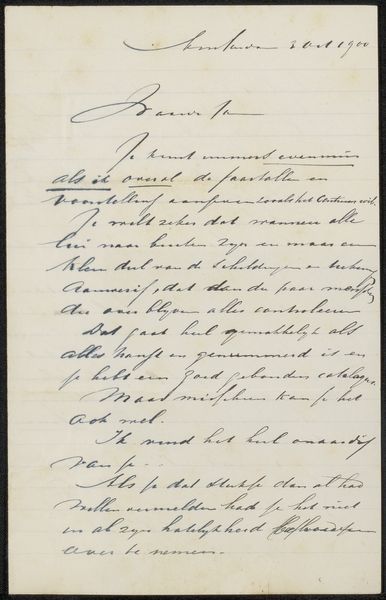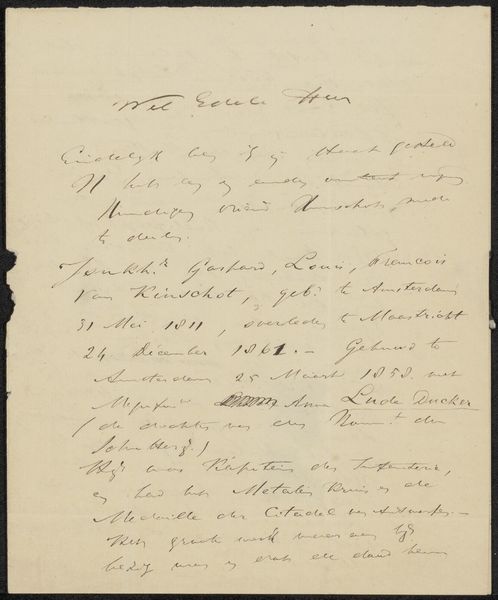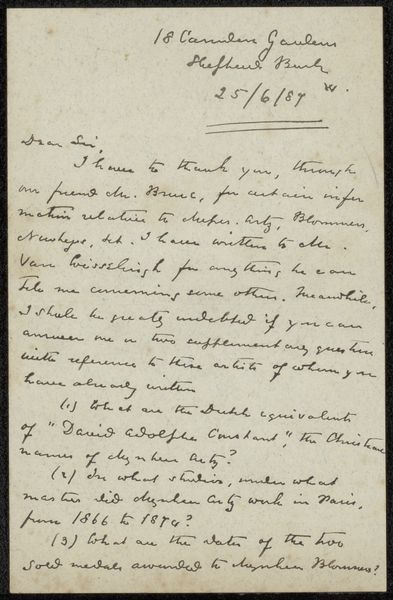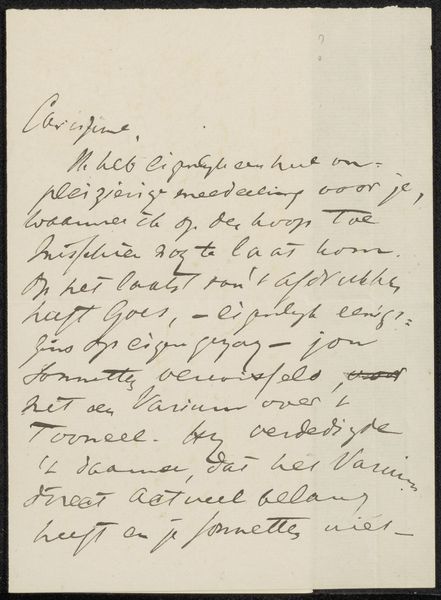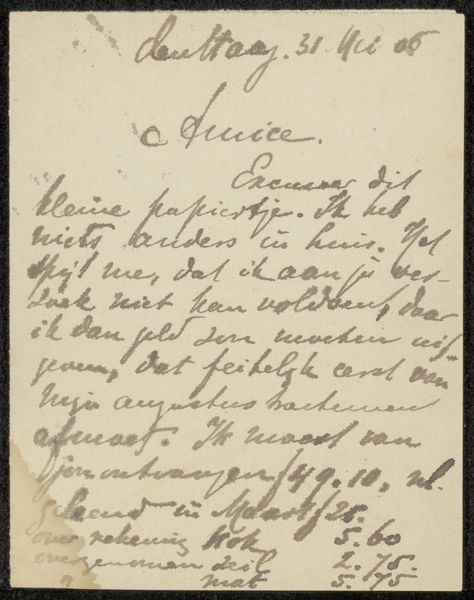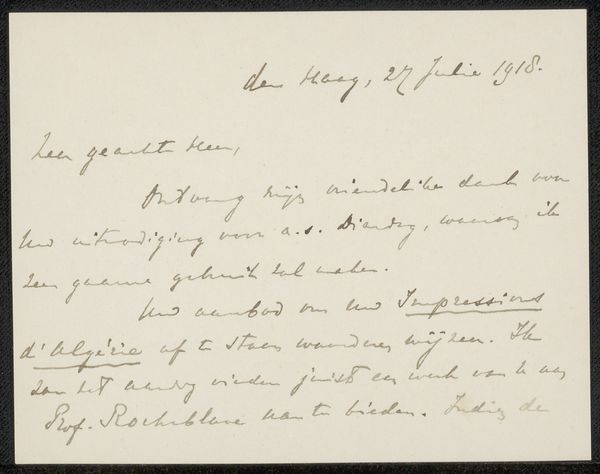
drawing, paper, ink
#
drawing
#
paper
#
ink
#
calligraphy
Copyright: Rijks Museum: Open Domain
Curator: This is a letter, likely from 1905, titled “Brief aan Philip Zilcken” created by Carel Nicolaas Storm van 's-Gravesande. It’s composed with ink on paper, and the Rijksmuseum holds it in its collection. Editor: At first glance, the calligraphy strikes me. It flows across the page with a rhythmic elegance, almost like musical notation. But I confess, the handwriting also seems a bit…difficult to decipher! Curator: It is definitely an intimate look into a moment of correspondence. The art lies not only in the visual form of the calligraphy but in its function—conveying personal thoughts, possibly regarding exhibition plans in Venice, given the reference in the second line, which adds to the historical value and context surrounding this piece. Editor: Absolutely. Structurally, notice how the script fills nearly the entire page, yet it doesn't feel chaotic. There's a careful distribution of ink, a considered lightness that prevents the darker strokes from overwhelming the composition. I like the texture as well. Curator: And let’s think about the intended audience: a fellow artist, presumably familiar with the nuances of art and society. This letter offers insights into their network, revealing shared aspirations, struggles, and artistic practices of the time. The artist clearly was a social figure embedded within this period, which is more the focus for my considerations here. Editor: Precisely! The looping ascenders and descenders create a captivating play of positive and negative space, guiding the eye and leading you along this…visual narrative, I guess? It makes me feel as if there were a sense of urgency but tempered with artistic flourish. Curator: Letters offer invaluable perspectives on human connections and cultural shifts, documenting both public and private exchanges. Editor: Yes, I see it as a form that expresses itself through gesture; this calligraphic gesture across paper, now still present, becomes an object that invites the observer into its narrative, and indeed it helps reveal that rich tapestry you mentioned. Curator: Right, the public sphere and personal narratives intersect to illuminate that period. Considering the artwork through that lens gives this letter a value, for it becomes part of that complex social record. Editor: Yes, that is also what struck me – it has a quality where the graphic and gestural, visual forms converge; a dialogue between hand and intention. A piece that manages to capture your attention due to those formal qualities in addition to those insights that help contextualize its relevance.
Comments
No comments
Be the first to comment and join the conversation on the ultimate creative platform.
